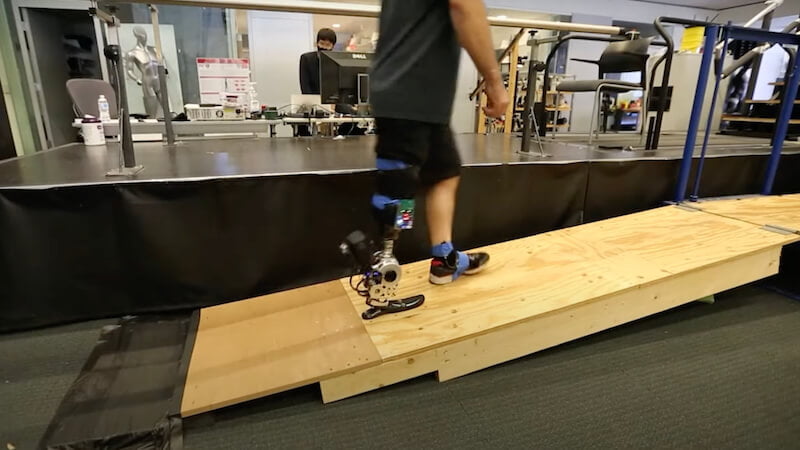
A neural interface allows people to control a new type of prosthesis using their thoughts. This so-called bionic leg is intended to give the feeling that the prosthesis is part of the body.
A prosthesis can significantly improve the lives of people who have lost their legs, but it is often difficult to move. A new neural interface now connects a bionic limb to the nerve endings in the thigh. This means that those affected can control the prosthesis using their thoughts.
The device is the result of the latest research in this field. It could give people with below-knee amputations the feeling that the prosthesis is a part of them.
Hugh Herr, one of the lead authors of the study, is himself a bilateral below-the-knee amputee. In a statement, he explains that the connection of the brain to the new prosthesis can give the feeling that it is part of one's own anatomy.
Neural interface enables control of prosthesis via thoughts
Two steps are necessary to connect the neural interface to a prosthesis. First, patients undergo an operation in which doctors connect the remaining parts of the tibia and calf muscles after a lower leg amputation. This reconstruction is intended to enable more dynamic movement of the prosthesis and reduce phantom pain.
In the second step, surface electrodes measure the nerve activity that the brain sends to the calf and shin muscles to indicate the intention of a movement. A small computer in the bionic prosthesis decodes these signals and moves the leg accordingly. Comparative studies show that patients with a neural interface can run 41 percent faster and avoid obstacles more skillfully.
Prosthesis feels like part of your own body
Affected individuals described the prosthesis as feeling more like a part of their body. Doctors can perform the operation both during and years after an amputation. However, it does not work equally well for all patients.
Surface electrodes that allow full neural control will not be available for clinical use for several years. Herr and his team at MIT are working to replace these electrodes with magnetic spheres that can track muscle movements more accurately. The long-term goal is to completely reconstruct bodies and achieve comprehensive neural integration.
Also interesting:
Source: https://www.basicthinking.de/blog/2024/07/11/neuronale-schnittstelle-prothesen/


